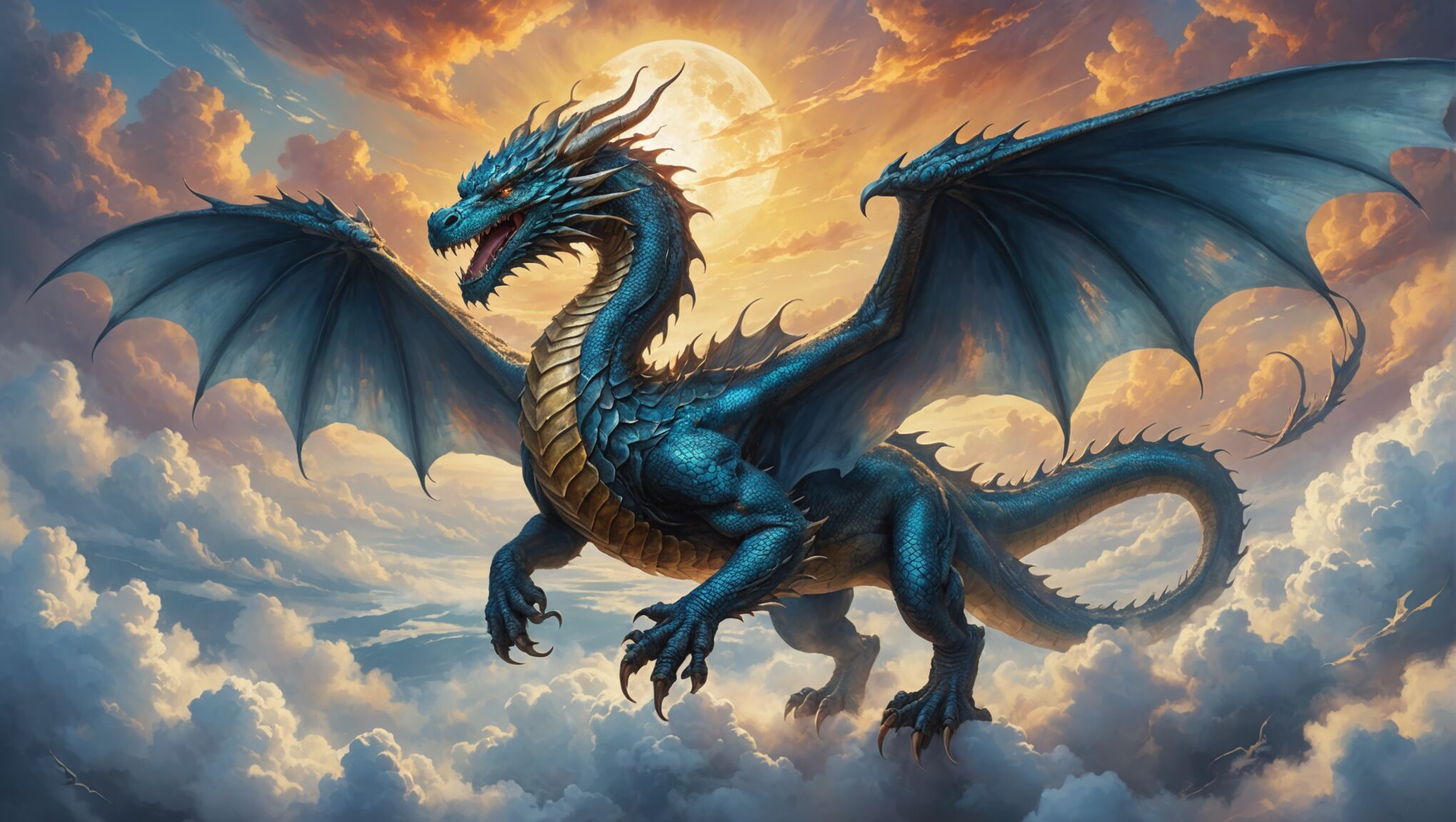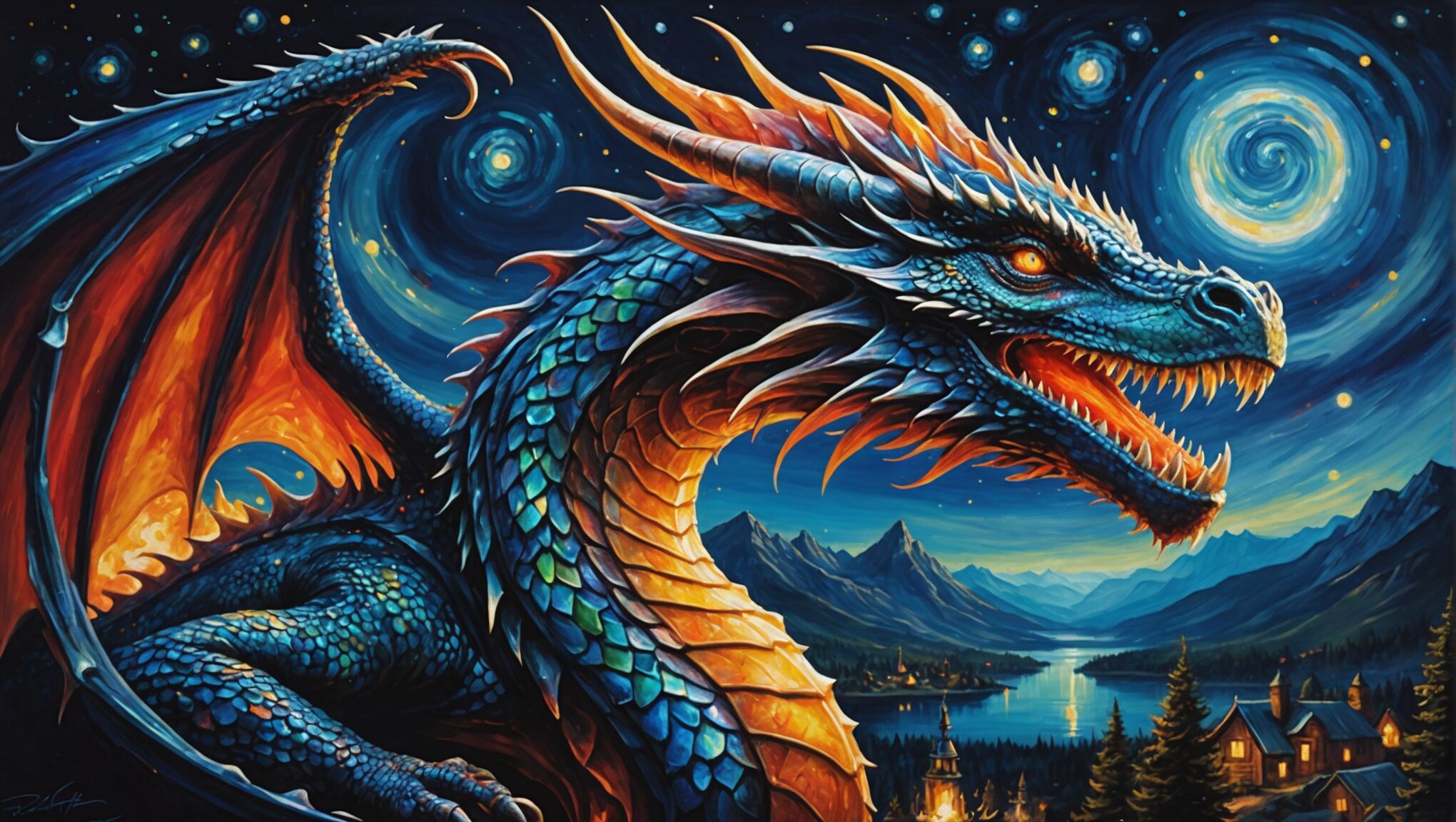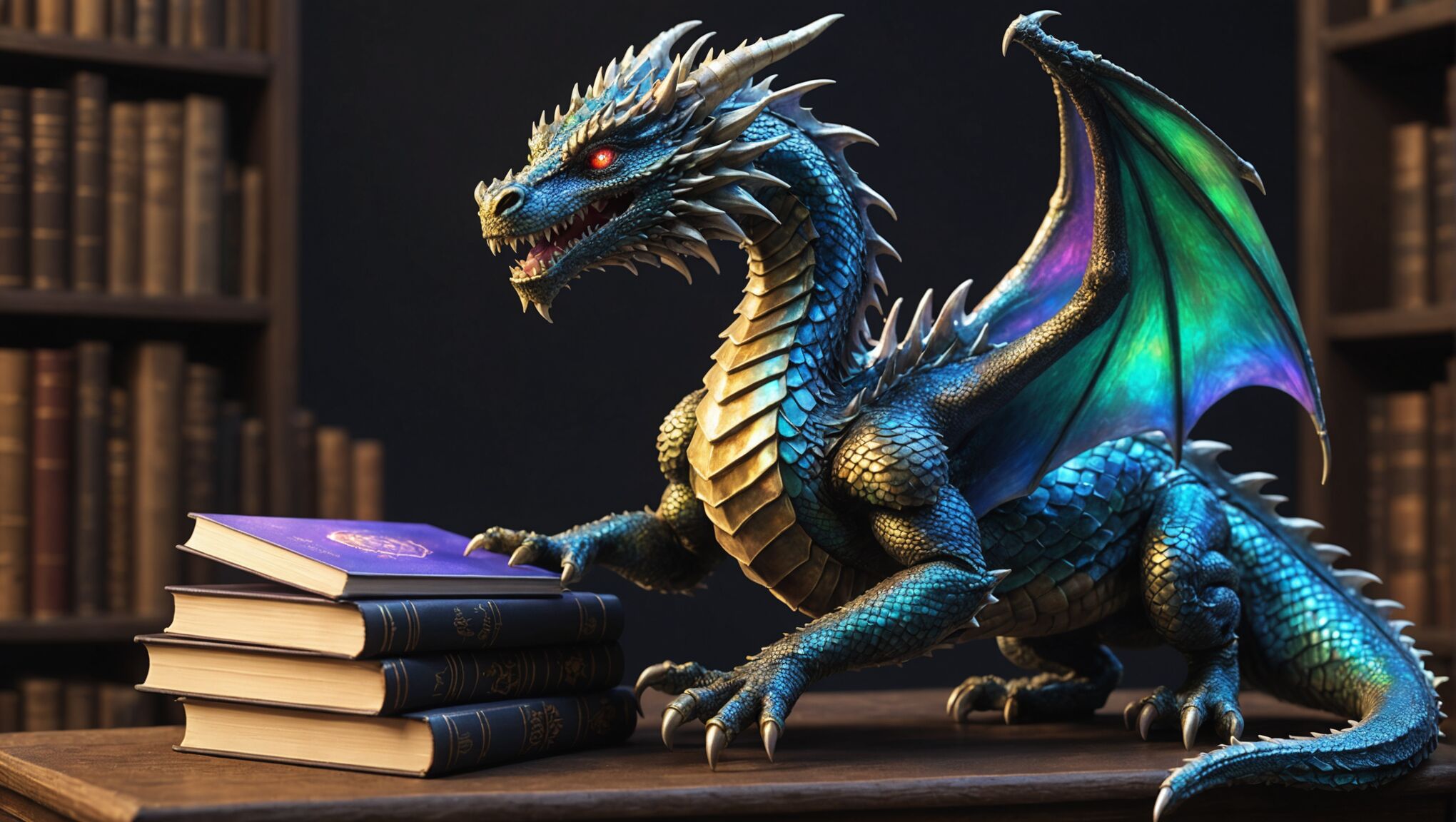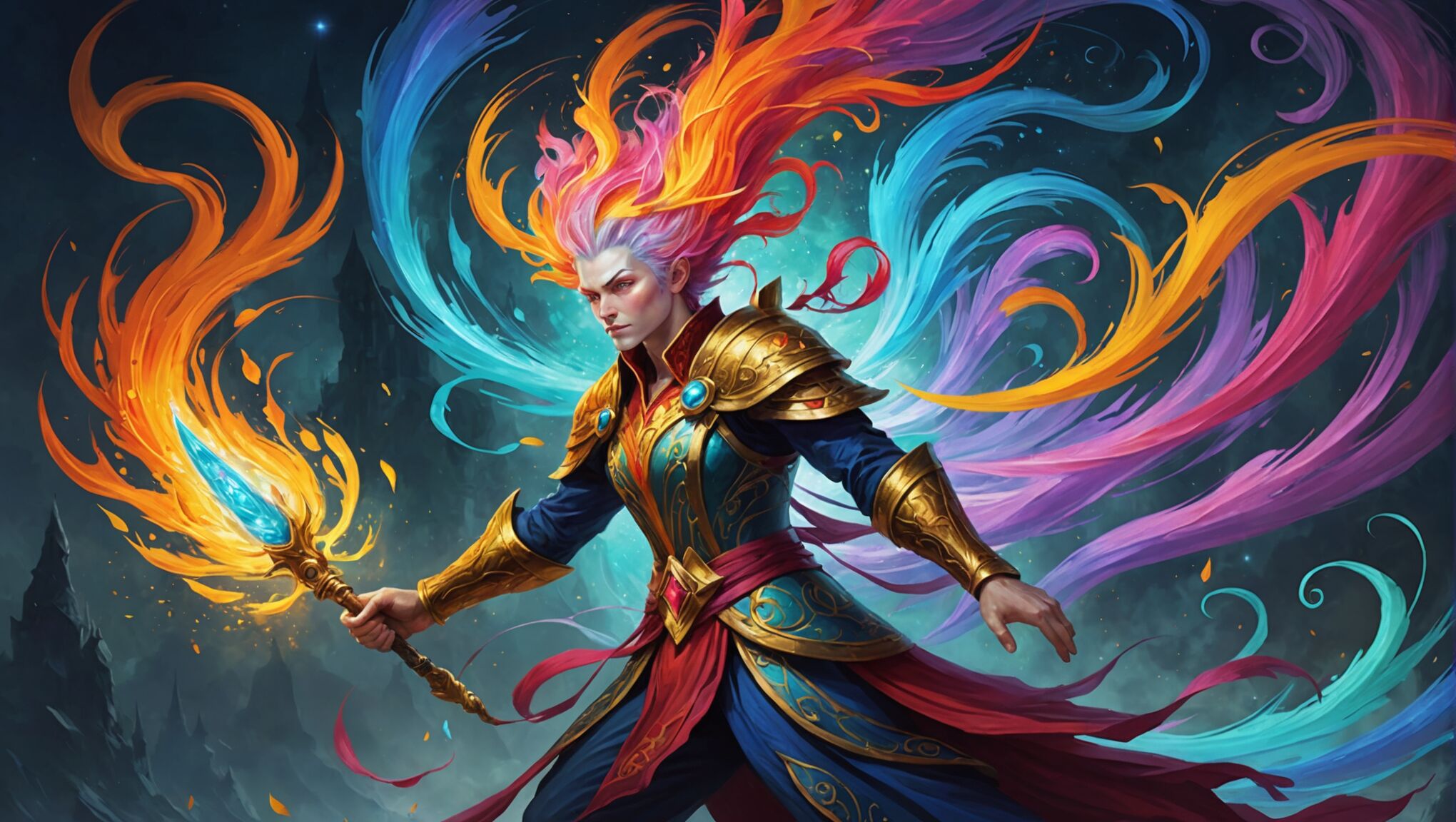blog
Fantasy Book Covers: Digital Art vs Traditional Art
Fantasy book covers have undergone a remarkable evolution since the genre’s inception. In the early 20th century, covers were often simple and text-heavy, with minimal illustrations. As printing technology advanced, vibrant artwork began to grace the covers of fantasy novels, captivating readers’ imaginations. The 1960s and 1970s saw a surge in fantastical imagery, with artists like Frank Frazetta and Boris Vallejo setting new standards for cover art. Their hyper-realistic depictions of muscular heroes and scantily clad heroines became iconic representations of the genre. The 1980s and 1990s witnessed a shift towards more diverse and sophisticated artwork, with artists like Michael Whelan and Jody Lee bringing a fresh perspective to fantasy covers. “A book cover is a promise,” as the saying goes, and these artists understood the power of visual storytelling in attracting readers. As the new millennium approached, digital tools began to make their way into cover design, paving the way for the complex, layered artworks we see today. Throughout this journey, fantasy book covers have reflected not only the content of the books but also the artistic trends and technological advancements of their time.
Digital art techniques in modern fantasy covers
 In the realm of modern fantasy book covers, digital art techniques have revolutionized the creative process and expanded the possibilities for visual storytelling. Artists now wield powerful software tools like Adobe Photoshop, Corel Painter, and Procreate to craft intricate and visually stunning cover art. These digital platforms offer a vast array of brushes, textures, and effects that allow artists to mimic traditional media or create entirely new aesthetics.
In the realm of modern fantasy book covers, digital art techniques have revolutionized the creative process and expanded the possibilities for visual storytelling. Artists now wield powerful software tools like Adobe Photoshop, Corel Painter, and Procreate to craft intricate and visually stunning cover art. These digital platforms offer a vast array of brushes, textures, and effects that allow artists to mimic traditional media or create entirely new aesthetics.
One of the most significant advantages of digital art is the ability to work in layers. This feature enables artists to experiment with different elements, compositions, and color schemes without compromising the entire piece. They can easily adjust individual components, refine details, and make sweeping changes with a few clicks, providing unparalleled flexibility in the creative process.
Digital painting techniques have also evolved to create hyper-realistic imagery that was once the domain of traditional oil paintings. Artists can now achieve incredibly detailed textures, complex lighting effects, and atmospheric depth that rival or even surpass traditional methods. The use of 3D modeling software in conjunction with digital painting has further expanded the realm of possibility, allowing artists to create fantastical creatures and environments with unprecedented realism and depth.
“Digital art has opened up a whole new world of possibilities. It’s like having an entire art studio at your fingertips, with unlimited supplies and the ability to undo mistakes instantly.” – Dan Dos Santos, award-winning fantasy cover artist
Color manipulation is another area where digital techniques excel. Artists can easily experiment with different color palettes, apply color grading techniques borrowed from film and photography, and create mood-enhancing effects that were once difficult or impossible to achieve with traditional media. This level of control over color allows for the creation of covers that are not only visually striking but also emotionally evocative.
Typography integration has also been transformed by digital techniques. Artists can seamlessly blend text with imagery, creating covers where the title and author’s name become integral parts of the overall composition. Advanced effects like 3D text, custom fonts, and dynamic text layouts are now commonplace, adding another layer of visual interest to fantasy book covers.
Digital art has also facilitated collaboration between artists and art directors. With the ability to share files instantly and make real-time adjustments, the iterative process of cover design has become more efficient and dynamic. This collaborative approach often results in covers that more accurately reflect the vision of both the artist and the publisher.
The rise of digital art has also democratized the field of cover illustration. Aspiring artists now have access to professional-grade tools and a wealth of online resources for learning and improving their craft. This has led to a diverse range of styles and fresh perspectives in fantasy cover art, enriching the visual landscape of the genre.
However, the prevalence of digital techniques has also raised concerns about the potential loss of the “human touch” in artwork. Some argue that the polish and perfection achievable with digital tools can sometimes result in a lack of the organic imperfections that give traditional art its charm. As a result, many digital artists strive to incorporate techniques that mimic the textures and irregularities of traditional media, creating a hybrid approach that combines the best of both worlds.
Traditional art methods for fantasy illustrations

While digital art has revolutionized the fantasy book cover landscape, traditional art methods continue to hold a special place in the hearts of many artists and readers alike. These time-honored techniques bring a unique charm and tangible quality to cover illustrations that can’t always be replicated digitally.
Oil painting remains a favorite medium for fantasy cover artists who prefer traditional methods. The rich, vibrant colors and ability to create subtle blends and textures make oil paints ideal for depicting fantastical scenes. Artists like Donato Giancola and Gregory Manchess are renowned for their oil paintings that grace the covers of many bestselling fantasy novels. The depth and luminosity achieved through layering oil paints can create an almost three-dimensional effect, drawing the viewer into the imaginary world depicted on the cover.
Watercolor is another beloved medium in fantasy illustration. Its translucent quality allows for the creation of ethereal, dreamlike imagery that perfectly suits certain fantasy subgenres. Artists like Stephanie Law and Charles Vess have mastered the art of watercolor, using its fluid nature to create mystical landscapes and delicate, otherworldly characters. The unpredictable nature of watercolors can also lead to happy accidents that add a unique, organic touch to the artwork.
Acrylics offer a middle ground between oils and watercolors, providing quick drying times and versatility. Many artists appreciate acrylics for their ability to create both bold, graphic images and subtle, layered effects. The fast-drying nature of acrylics allows for rapid iterations and experimentation, which can be particularly useful when working under tight deadlines common in the publishing industry.
Mixed media approaches are also popular among traditional fantasy artists. Combining different materials such as colored pencils, inks, and even collage elements can result in richly textured and visually complex cover art. This technique allows artists to play to the strengths of various media, creating unique effects that can’t be achieved through a single medium alone.
Airbrush techniques, while less common today, have historically been used to create smooth gradients and ethereal effects in fantasy cover art. Artists like Boris Vallejo and Julie Bell became known for their airbrushed covers featuring muscular heroes and mythical creatures with an almost photorealistic quality.
Printmaking techniques such as linocut and woodblock printing have also found their way onto fantasy book covers, offering a distinctive, graphic quality that stands out on bookstore shelves. These methods bring a sense of craftsmanship and history to cover art, appealing to readers who appreciate a more artisanal aesthetic.
One of the most significant advantages of traditional art methods is the tangible, one-of-a-kind nature of the original artwork. Many collectors and enthusiasts value the ability to own an original painting or illustration that served as a book cover. This aspect of traditional art creates a secondary market for cover artists and adds value to their work beyond the initial commission.
The physical process of creating traditional art also influences the final product in ways that digital methods can’t always replicate. The texture of canvas or paper, the way paint behaves under different conditions, and even the artist’s physical gestures all contribute to the unique character of traditional cover art. These elements can add a sense of authenticity and craftsmanship that resonates with many readers.
Traditional methods also encourage a more deliberate approach to composition and color choice, as changes are not as easily made as in digital art. This can result in more carefully considered designs and a deeper connection between the artist and their work. The limitations of physical media often spark creativity, leading to innovative solutions and techniques that might not have been explored in a digital environment.
Despite the rise of digital art, many publishers still commission traditional artwork for certain titles or series, recognizing the unique appeal and marketing potential of hand-crafted cover illustrations. The choice between digital and traditional methods often comes down to the specific vision for the book, the artist’s strengths, and the target audience’s preferences.
Pros and cons of digital vs traditional art
When comparing digital and traditional art for fantasy book covers, both approaches offer distinct advantages and drawbacks. Digital art provides unparalleled flexibility and efficiency, allowing artists to make quick adjustments, experiment with various elements, and collaborate more easily with publishers. The ability to undo mistakes, work in layers, and access a wide range of tools and effects gives digital artists tremendous creative freedom. Moreover, digital techniques enable the creation of highly detailed and complex imagery that can be challenging to achieve through traditional means.
On the other hand, traditional art methods offer a tactile quality and uniqueness that many find appealing. The physical texture of paint on canvas or the subtle variations in watercolor washes can create a warmth and depth that digital art sometimes struggles to replicate. Traditional artwork also carries the allure of owning an original piece, which can be valuable for collectors and enthusiasts.
| Digital Art | Traditional Art |
| Efficient workflow | Tactile, unique originals |
| Easy revisions and iterations | Organic imperfections and textures |
| Wide range of tools and effects | Potential for higher resale value |
| Seamless integration of typography | Tangible connection to the artistic process |
Digital art’s efficiency can be a double-edged sword. While it allows for rapid production and easy modifications, it can sometimes lead to over-polished works that lack the charm of handcrafted pieces. The ease of digital creation may also result in a flood of mediocre covers, as the barrier to entry is lower compared to traditional art forms.
Traditional art, however, can be more time-consuming and costly. Materials can be expensive, and mistakes are not easily corrected. The process of scanning or photographing traditional artwork for print can also introduce technical challenges, potentially compromising the original’s quality.
From a marketing perspective, digital art offers greater flexibility in creating variations for different markets or formats. It’s easier to adjust colors, compositions, or even entire elements to suit various editions or international releases. Traditional art, while less flexible, can be a unique selling point, especially for limited or special editions.
The choice between digital and traditional art can also impact the perceived value of the book. Some readers associate traditional art with higher quality or more prestigious publications, while others are drawn to the sleek, modern look of digital illustrations.
Environmental considerations are another factor to weigh. Digital art reduces the need for physical materials and shipping, potentially making it a more eco-friendly option. However, the electronic devices and energy required for digital art production also have environmental impacts.
Ultimately, the decision between digital and traditional art for fantasy book covers often comes down to the specific needs of the project, the artist’s skills and preferences, and the target audience. Many successful cover artists now employ a hybrid approach, combining the strengths of both digital and traditional techniques to create compelling and marketable fantasy book covers.
Impact on reader perception and book sales
 The impact of cover art on reader perception and book sales cannot be overstated in the fantasy genre. Covers serve as the first point of contact between a potential reader and a book, often determining whether a browser picks up the volume or passes it by. In the visually rich world of fantasy literature, where imagination reigns supreme, cover art plays an even more crucial role in capturing the essence of the story and enticing readers.
The impact of cover art on reader perception and book sales cannot be overstated in the fantasy genre. Covers serve as the first point of contact between a potential reader and a book, often determining whether a browser picks up the volume or passes it by. In the visually rich world of fantasy literature, where imagination reigns supreme, cover art plays an even more crucial role in capturing the essence of the story and enticing readers.
Digital and traditional art techniques each have their own unique effects on reader perception. Digital art often allows for more intricate details, vibrant colors, and fantastical elements that can immediately transport a viewer into another world. The polished look of digital covers can convey a sense of professionalism and modernity, which may appeal to readers seeking cutting-edge fantasy narratives. On the other hand, traditional art techniques can evoke a sense of nostalgia and craftsmanship that resonates with readers who appreciate a more classical approach to fantasy.
The choice between digital and traditional art can also influence the perceived genre and subgenre of a fantasy book. For instance, a hand-painted watercolor cover might suggest a lyrical, character-driven story, while a digitally rendered, action-packed scene could indicate a fast-paced adventure. This visual shorthand helps readers quickly identify books that align with their preferences, potentially boosting sales for well-matched titles.
Studies have shown that cover art significantly impacts book sales, with some estimates suggesting that a strong cover can increase sales by up to 50%. In the competitive fantasy market, where readers are often faced with numerous choices, a striking cover can make the difference between a bestseller and a overlooked gem. Publishers invest heavily in cover design, recognizing its power to drive sales and build author brands.
Illustrate the magic on your cover. Visit now for tips.
The rise of e-books and online retailers has added another layer of complexity to the impact of cover art. Thumbnails of book covers must now be eye-catching at a small scale, influencing design choices and potentially favoring bold, simple designs that translate well to digital platforms. This shift has led to new considerations in the digital vs. traditional art debate, as artists and publishers strive to create covers that are effective both in physical bookstores and online marketplaces.
Reader expectations also play a role in how cover art affects perception and sales. Fantasy readers often have strong preferences for certain styles of cover art, which can be influenced by nostalgia, current trends, or personal taste. A cover that aligns with these expectations can create an immediate connection with potential buyers, while one that deviates too far may struggle to find its audience.
The psychological impact of cover art on readers is profound. Colors, composition, and imagery can evoke emotions and set expectations for the tone and content of the book. A dark, foreboding cover suggests a gritty, perhaps dystopian fantasy, while a bright, whimsical illustration might promise a lighter, more humorous read. These visual cues help readers make split-second decisions about whether a book is likely to appeal to them.
In recent years, there has been a growing trend towards diversity and representation in fantasy cover art. This shift reflects changing societal attitudes and a demand for more inclusive storytelling. Cover art that features diverse characters or non-Western-inspired settings can attract readers looking for fresh perspectives in fantasy literature, potentially opening up new markets and boosting sales for books that might have been overlooked in the past.
The debate between digital and traditional art techniques in fantasy cover design continues to evolve, with each approach offering unique advantages in capturing reader attention and driving sales. As the publishing industry adapts to changing technologies and reader preferences, the role of cover art remains as vital as ever in shaping the success of fantasy books.
Future trends in fantasy cover art

As the fantasy genre continues to evolve, so too will the art that adorns its book covers. The future of fantasy cover art is likely to be shaped by a combination of technological advancements, changing reader preferences, and artistic innovations. One emerging trend is the integration of augmented reality (AR) technology into book covers. This could allow readers to interact with cover art using their smartphones, bringing static images to life with animation, sound, and even interactive elements that provide a taste of the story within.
Another trend on the horizon is the use of artificial intelligence (AI) in cover design. AI algorithms are already being used to generate artwork, and it’s conceivable that they could be employed to create or assist in the creation of book covers. This could lead to highly personalized covers that adapt to individual reader preferences or even change based on market trends.
The line between digital and traditional art is likely to blur further as new tools emerge that mimic traditional techniques with unprecedented accuracy. Digital brushes and textures that perfectly replicate the look and feel of oil paints, watercolors, and other traditional media may become so advanced that distinguishing between digital and traditional art becomes increasingly difficult.
Environmental concerns may drive a shift towards more sustainable practices in cover art production. This could manifest in the use of eco-friendly materials for physical books and a greater emphasis on digital-first cover designs that reduce the need for printed samples during the creation process.
As diversity and representation continue to be important issues in publishing, we can expect to see a wider range of cultural influences in fantasy cover art. Artists from diverse backgrounds may bring fresh perspectives and artistic traditions to the genre, expanding the visual language of fantasy covers.
The rise of self-publishing and indie authors may lead to more experimental and unconventional cover designs. Without the constraints of traditional publishing houses, independent creators might push the boundaries of what’s considered acceptable or marketable in fantasy cover art.
Virtual reality (VR) and holographic technologies could also play a role in the future of book marketing, allowing potential readers to immerse themselves in a three-dimensional representation of a book’s world before making a purchase. While not a traditional “cover” in the sense we know today, these experiences could serve a similar function in attracting readers and conveying the essence of a story.
As social media continues to influence marketing strategies, we may see a trend towards creating cover art that is specifically designed to be shared and go viral online. This could result in more dynamic, meme-friendly designs that capture attention in the fast-scrolling world of social platforms.
The concept of “living” book covers for e-books may gain traction, with artwork that subtly animates or changes over time. This could include covers that reflect the time of day, respond to touch, or even update based on the reader’s progress through the book.
Ultimately, the future of fantasy cover art is likely to be characterized by a blend of tradition and innovation. While new technologies will undoubtedly shape the field, the fundamental goal of cover art – to capture the imagination and entice readers – will remain unchanged. Artists and publishers will continue to seek that perfect balance between the familiar and the fantastical, using whatever tools and techniques best serve the story and its audience.

